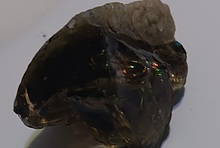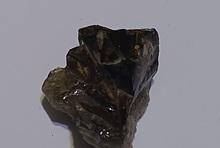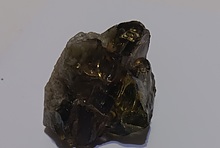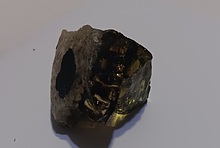Home PageAbout MindatThe Mindat ManualHistory of MindatCopyright StatusWho We AreContact UsAdvertise on Mindat
Donate to MindatCorporate SponsorshipSponsor a PageSponsored PagesMindat AdvertisersAdvertise on Mindat
Learning CenterWhat is a mineral?The most common minerals on earthInformation for EducatorsMindat ArticlesThe ElementsThe Rock H. Currier Digital LibraryGeologic Time
Minerals by PropertiesMinerals by ChemistryAdvanced Locality SearchRandom MineralRandom LocalitySearch by minIDLocalities Near MeSearch ArticlesSearch GlossaryMore Search Options
The Mindat ManualAdd a New PhotoRate PhotosLocality Edit ReportCoordinate Completion ReportAdd Glossary Item
Mining CompaniesStatisticsUsersMineral MuseumsClubs & OrganizationsMineral Shows & EventsThe Mindat DirectoryDevice SettingsThe Mineral Quiz
Photo SearchPhoto GalleriesSearch by ColorNew Photos TodayNew Photos YesterdayMembers' Photo GalleriesPast Photo of the Day GalleryPhotography
╳Discussions
💬 Home🔎 Search📅 LatestGroups
EducationOpen discussion area.Fakes & FraudsOpen discussion area.Field CollectingOpen discussion area.FossilsOpen discussion area.Gems and GemologyOpen discussion area.GeneralOpen discussion area.How to ContributeOpen discussion area.Identity HelpOpen discussion area.Improving Mindat.orgOpen discussion area.LocalitiesOpen discussion area.Lost and Stolen SpecimensOpen discussion area.MarketplaceOpen discussion area.MeteoritesOpen discussion area.Mindat ProductsOpen discussion area.Mineral ExchangesOpen discussion area.Mineral PhotographyOpen discussion area.Mineral ShowsOpen discussion area.Mineralogical ClassificationOpen discussion area.Mineralogy CourseOpen discussion area.MineralsOpen discussion area.Minerals and MuseumsOpen discussion area.PhotosOpen discussion area.Techniques for CollectorsOpen discussion area.The Rock H. Currier Digital LibraryOpen discussion area.UV MineralsOpen discussion area.Recent Images in Discussions
EducationPOTD: Cinnabar crystal shape

10th Oct 2017 12:18 UTCHerwig Pelckmans
Looking at the POTD,
https://www.mindat.org/photo-816500.html
I have a hard time figuring out how this can be a trigonal crystal ... sure looks more like orthorhombic to me!
But then looks can be deceiving ...
Cheers, Herwig
MKA (Belgium)

10th Oct 2017 12:46 UTCAlfredo Petrov Manager
10th Oct 2017 15:04 UTCHarold Moritz 🌟 Expert
10th Oct 2017 16:20 UTCSteve Hardinger 🌟 Expert

12th Oct 2017 11:40 UTCHerwig Pelckmans
I agree, you are absolutely right about there being many different rhombohedral forms.
I have no problem "seeing a rhombohedron instead of a cube in the photo", so to speak.
What bothers me is the 2 small crystal faces that modify that rhombohedron.
They are oposite of each other and "at the same side of the upper rhombohedral plane".
That does not indicate a trigonal symmetry ...
Cheers, Herwig
MKA (Belgium)

12th Oct 2017 12:38 UTCErik Vercammen Expert
12th Oct 2017 14:46 UTCJohan Kjellman Expert
cheers
12th Oct 2017 14:59 UTCHarold Moritz 🌟 Expert
Yes, I did notice the triangular faces cutting off the two corners and thought about them cuz they are apparently "unsymettrical". Erik beat me to it! And Johan snuck in a good comment, too, while I was writing this one.
If one of the triangular faces is a pinacoid, then it should be repeated only on the opposite side diagonally through the crystal (the bottom side attached to the gypsum), rather than on the same side where the other triangular face is. Calcite drawing 16 shows this combination of forms. So I dont think that is it, unless this crystal is twinned, but I dont see other evidence of that. I dont think cinnabar follows the same twin laws as calcite.
Calcite drawing 59 shows a hexagonal prism intersecting the rhomb, in which case there are 3 triangular faces rather than 2 on the same side of the rhomb. In line with Erik, I think this particular crystal is just showing unequal development of the faces of a prism form, considering that two of the faces have different sizes and so the third face is just missing (messy Nature again). To know for sure, of course, measurements are needed, otherwise we can speculate forever.
Endless fun with crystal forms!




Mindat.org is an outreach project of the Hudson Institute of Mineralogy, a 501(c)(3) not-for-profit organization.
Copyright © mindat.org and the Hudson Institute of Mineralogy 1993-2024, except where stated. Most political location boundaries are © OpenStreetMap contributors. Mindat.org relies on the contributions of thousands of members and supporters. Founded in 2000 by Jolyon Ralph.
Privacy Policy - Terms & Conditions - Contact Us / DMCA issues - Report a bug/vulnerability Current server date and time: April 19, 2024 08:21:13
Copyright © mindat.org and the Hudson Institute of Mineralogy 1993-2024, except where stated. Most political location boundaries are © OpenStreetMap contributors. Mindat.org relies on the contributions of thousands of members and supporters. Founded in 2000 by Jolyon Ralph.
Privacy Policy - Terms & Conditions - Contact Us / DMCA issues - Report a bug/vulnerability Current server date and time: April 19, 2024 08:21:13











